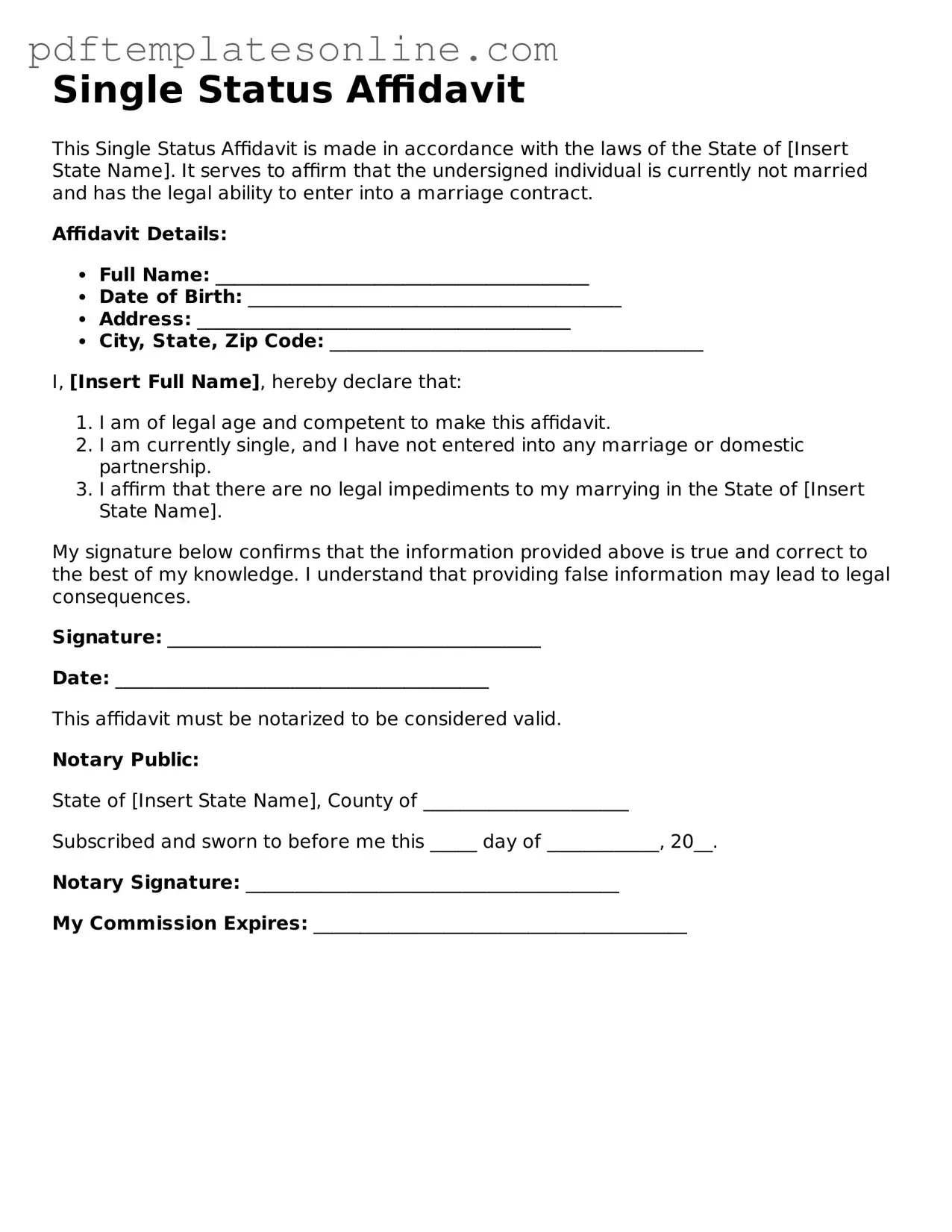Filling out the Single Status Affidavit form can be a straightforward task, but many people make mistakes that can lead to delays or complications. One common error is providing incorrect personal information. It’s crucial to ensure that your name, date of birth, and other identifying details match your official documents. Any discrepancies can raise questions and cause issues later on.
Another frequent mistake is failing to sign the affidavit. Some individuals may forget this step, thinking that simply filling out the form is enough. A signature is essential as it verifies that the information provided is accurate and truthful.
Not having the affidavit notarized is also a common oversight. Many jurisdictions require a notary public to witness the signing of the affidavit. Without this step, the document may not be considered valid, leading to further complications.
People often overlook the need for supporting documents. When submitting the Single Status Affidavit, it may be necessary to include identification or proof of residency. Failing to attach these documents can result in the rejection of the affidavit.
Another mistake is using outdated forms. Laws and requirements can change, so it’s important to ensure that you are using the most current version of the affidavit. Using an old form may lead to unnecessary delays.
Some individuals may rush through the process and provide incomplete information. Leaving out sections or failing to answer questions fully can cause confusion and may require you to resubmit the form.
Misunderstanding the purpose of the affidavit can lead to errors as well. The Single Status Affidavit is meant to confirm your single status for legal purposes. Misrepresenting your situation can have serious consequences.
People sometimes fail to check the requirements of the jurisdiction where they are submitting the affidavit. Each state or county may have different rules regarding the form. Not adhering to these specific requirements can result in the affidavit being rejected.
Another mistake is not keeping a copy of the completed affidavit for personal records. It’s always a good idea to have a copy on hand in case you need to reference it in the future.
Finally, some individuals may underestimate the importance of accuracy. Even minor errors can have significant implications. Taking the time to review the completed form before submission can help avoid these pitfalls.
